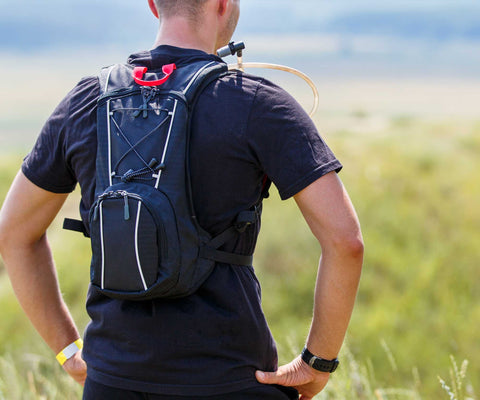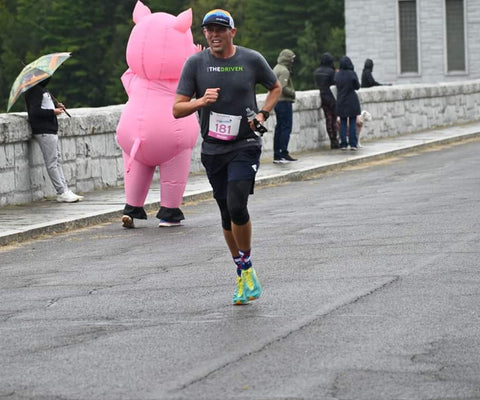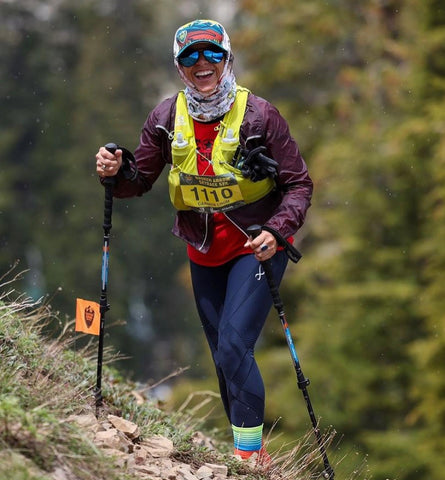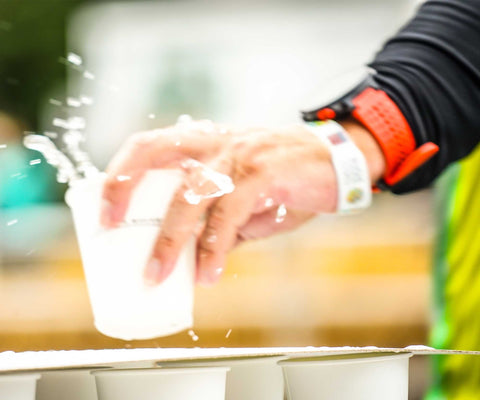When a long-distance runner considers the things they need to excel at their sport, comfortable sneakers, dedicated training, and the right gear (like compression clothing from CW-X to help in performance and recovery) might come to mind at first. But even the most expensive shoes, expert routine, and top-of-the-line compression gear can't replace the benefits of staying well hydrated. As marathoners push their bodies to the limit, drinking enough water is a critical component of their training and race-day strategy.

The Science of Hydration in Long-Distance Running
Long-distance running subjects the body to significant stress, leading to fluid loss through sweat and increased metabolic demands. Adequate hydration is essential for maintaining optimal performance, as dehydration can impair endurance, muscle function, and cognitive abilities during prolonged exercise.
Understanding Your Body's Hydration Needs
Each individual's hydration needs vary based on factors such as body weight, sweat rate, environmental conditions, and intensity of exercise. Marathon runners must understand their unique requirements and tailor their fluid intake accordingly.
The Impact of Dehydration on Performance
Not drinking enough fluid can have detrimental effects on athletic performance, ranging from decreased endurance and muscle cramps to impaired thermoregulation and increased risk of heat-related illnesses. Marathon runners can mitigate these risks and sustain their energy levels throughout the race with proper hydration techniques.

Innovative Hydration Systems for Marathon Runners
Fortunately, advancements in hydration technology have led to the development of innovative systems specifically designed for the needs of marathon runners. These systems prioritize lightweight construction and ergonomic designs to minimize interference with activity while providing easy access to fluids. From handheld bottles and hydration vests to waist belts and collapsible water bottles, there's a wide range of options available to suit runners' preferences and race-day requirements.
The Evolution of Running Hydration Gear
Over the years, running hydration gear has undergone significant evolution to meet the changing demands of athletes. From cumbersome water bottles and bulky hydration packs to streamlined, minimalist designs, manufacturers have continually refined their products to enhance comfort, functionality, and performance for runners.
Lightweight Solutions for Hydration on the Go
For marathoners seeking lightweight hydration solutions, handheld water bottles offer a convenient and portable option. These ergonomically designed bottles feature straps or grips that allow runners to carry them comfortably while maintaining a natural arm swing. Hydration vests and waist belts provide hands-free alternative options for carrying fluids without impeding movement or causing discomfort.
Ergonomic Hydration Systems: A Game Changer
Ergonomic hydration systems prioritize comfort and functionality, incorporating features such as adjustable straps, breathable materials, and strategically placed pockets for storing essentials like gels, keys, and smartphones. By optimizing fit and weight distribution, these systems enhance runners' overall experience and allow them to focus solely on their performance.

Hydration Strategies Before, During, and After a Run
Effective hydration strategies encompass pre-run, during-run, and post-run protocols to ensure optimal fluid balance and recovery.
How to Hydrate Before a Run
Before embarking on a long run or marathon, it's essential to start hydrating well in advance. Aim to drink water or electrolyte beverages in the hours leading up to the run, focusing on gradual hydration rather than consuming large volumes all at once. Avoid excessive caffeine or alcohol intake, as these can contribute to dehydration.
Maintaining Hydration During Long Runs
During long runs, marathoners should prioritize staying hydrated by consuming fluids at regular intervals. Depending on individual sweat rates and environmental conditions, aim to drink approximately 4 to 8 ounces of fluid every 15 to 20 minutes to prevent dehydration. Experiment with different hydration strategies during training runs to determine the optimal approach for race day.
Rehydration: Key to Post-Run Recovery
Rehydration becomes paramount to facilitate recovery and replenish fluid and electrolyte losses after your run is over. Focus on consuming water, electrolyte-rich beverages, and foods containing sodium and potassium to restore hydration levels and support muscle repair. Monitor urine color and frequency as indicators of hydration status, aiming for pale yellow urine output as a sign of adequate fluid intake.

Choosing the Right Hydration Gear for Your Running Needs
When selecting hydration gear for long-distance running, consider factors such as comfort, capacity, accessibility, and versatility. Experiment with different products during training runs to assess their performance and compatibility with your running style and preferences. Whether opting for handheld bottles, hydration vests, or waist belts, prioritize lightweight, ergonomic designs that enhance rather than hinder your running experience.
Factors to Consider When Choosing Hydration Gear
When evaluating hydration gear options, take into account factors such as fit, adjustability, stability, and storage capacity. Look for features like breathable mesh panels, adjustable straps, and secure closures to ensure a comfortable and hassle-free running experience. Additionally, consider the type of fluids you prefer to carry and the duration of your runs when selecting hydration gear tailored to your specific needs.
Comparing Different Types of Hydration Systems
Various types of hydration systems are available for marathon runners, each offering unique advantages and considerations. Handheld water bottles provide portability and convenience, while hydration vests offer greater fluid capacity and storage options. Waist belts and hydration packs provide alternative carrying methods for longer runs or trail races. Assess your hydration needs and running conditions to determine which system best aligns with your preferences and performance goals.
Personalizing Your Hydration Strategy
Ultimately, the most effective hydration strategy is one that's tailored to your individual preferences and running habits. Experiment with different hydration systems, fluid intake protocols, and electrolyte supplementation strategies during training to identify what works best for you. Pay attention to cues from your body, such as thirst, sweat rate, and energy levels, to fine-tune your plan.

Staying Hydrated: Tips and Tricks for Long Distance Runners
In addition to using specialized hydration gear, there are several tips marathon runners can employ to stay hydrated and perform at their best.
Hydration Dos and Don'ts for Runners
DO prioritize hydration before, during, and after long runs or races to maintain optimal performance and recovery. DO experiment with different hydration strategies and products during training to identify what works best for you. DON'T wait until you're thirsty to start drinking fluids, as thirst is a delayed indicator of dehydration. DON'T rely solely on water for hydration; electrolyte-rich beverages or supplements may be necessary to replace lost salts and minerals.
Creative Ways to Stay Hydrated on Long Runs
In addition to traditional hydration methods, there are creative ways marathon runners can stay hydrated during long runs. Consider freezing your water bottles or hydration bladder before heading out to ensure cold refreshment throughout your run. Experiment with electrolyte-rich snacks like watermelon or cucumber slices to supplement your fluid intake and replenish essential minerals lost through sweat. Incorporate hydration checkpoints into your running route, such as public water fountains or convenience stores, to refill your bottles or grab a quick sip.
Tracking and Adjusting Your Hydration Levels
To track your hydration levels during long runs or races, pay attention to signs of dehydration such as thirst, dry mouth, dark urine, or decreased performance. Consider weighing yourself before and after runs to estimate fluid losses and adjust your hydration strategy accordingly. Keep a log of your fluid intake, electrolyte consumption, and running conditions to identify patterns and optimize your hydration plan for future training sessions and races.
Whether you're starting to condition yourself for long runs or embarking on your 10th marathon, hydration is key to achieving peak performance and optimum recovery. With a wide array of innovative hydration solutions available, marathoners can choose lightweight and ergonomic gear that enhances their convenience without sacrificing performance.
As you embark on your journey as a long-distance runner, remember to prioritize hydration as an integral part of your training and race-day preparations. Explore the diverse range of hydration systems and products available to find what works best for your individual needs and preferences. By staying properly hydrated, you'll not only improve your performance but also enhance your overall running experience. Cheers to that.
